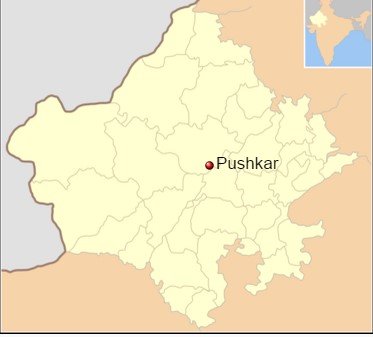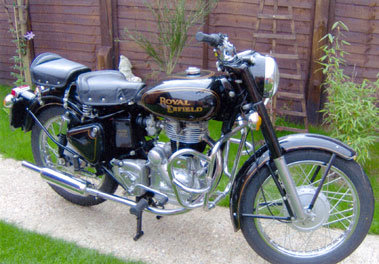KTMphil
Senior member
[FONT=Verdana, Arial, Helvetica, sans-serif]
[/FONT] [FONT=Verdana, Arial, Helvetica, sans-serif]Jodhpur[/FONT] [FONT=Verdana, Arial, Helvetica, sans-serif]
A[/FONT]ccording to Rathore tradition, the clan traces its origins back to the Hindu god, Rama, hero of the epic Ramayana, and thence to the sun. So the Rathore's belong to the Suryavansha (solar race) branch of the Kshatriyas, the warrior caste of Hindus. Later, breaking into historical reality, in 470 A.D. Nayal Pal conquered the kingdom of Kanauj, near modern Kanpur in Uttar Pradesh. The Rathor capital for seven centuries, Kanauj fell in 1193 to the Afghan invader's led by Muhammad Ghori.
[FONT=Verdana, Arial, Helvetica, sans-serif]T[/FONT]he fleeing ruler, Jai Chand was drowned in the Ganga. But his son Siyaji, had better luck. An expedient marriage alliance between the Rathore Sihaji and the sister of a local prince enabled the Rathors to consolidate themselves in this region. In fact, they prospered to such a degree that they managed to oust the Pratiharas of Mandor, nine km to the north of present day Jodhpur.He later set himself up as an independent ruler around the wealthy trading centre of Pali, just south of Jodhpur. His descendants flourished, battled often, won often, and in 1381 Rao Chanda ousted the Parihars from Mandor which then became the Rathore seat of government.Rathore fortunes then turned for better. Rao Chanda's son and heir, Rainmal, won praise for his capture of Ajmer and was then entrusted with the care of his orphaned nephew, destined to inherit the Mewar throne of Chittor. Rainmal may well have had his eyes on this fine, hilltop fort. But court intrigue and treachery stopped him. In 1438 he was doped with opium, and finally shot dead. This triggered bitter feuds, ending with Mewar and Marwar becoming separate states.Rathore legend continues in various versions. One is that Jodha, one of Rainmal's 24 sons, fled Chittor and finally, 15 years later, recaptured Mandor in 1453. Five years later he was acknowledged as ruler. A holy man sensibly advised him to move his capital to hilltop safety.
http://jodhpur.nic.in/dp.html#history
The old market & famous clock tower in Jodhpur
 IMG_0357_edited by Triangle Golden 007, on Flickr
IMG_0357_edited by Triangle Golden 007, on Flickr
 IMG_0355_edited by Triangle Golden 007, on Flickr
IMG_0355_edited by Triangle Golden 007, on Flickr
Chaos and bustle
 IMG_0353_edited by Triangle Golden 007, on Flickr
IMG_0353_edited by Triangle Golden 007, on Flickr
 IMG_0350_edited by Triangle Golden 007, on Flickr
IMG_0350_edited by Triangle Golden 007, on Flickr
Police
 IMG_0349_edited by Triangle Golden 007, on Flickr
IMG_0349_edited by Triangle Golden 007, on Flickr
 IMG_0358_edited by Triangle Golden 007, on Flickr
IMG_0358_edited by Triangle Golden 007, on Flickr
 IMG_0359_edited by Triangle Golden 007, on Flickr
IMG_0359_edited by Triangle Golden 007, on Flickr
A great bustling city, we liked Jodhpur immensely
 IMG_0364_edited by Triangle Golden 007, on Flickr
IMG_0364_edited by Triangle Golden 007, on Flickr
[/FONT] [FONT=Verdana, Arial, Helvetica, sans-serif]Jodhpur[/FONT] [FONT=Verdana, Arial, Helvetica, sans-serif]
A[/FONT]ccording to Rathore tradition, the clan traces its origins back to the Hindu god, Rama, hero of the epic Ramayana, and thence to the sun. So the Rathore's belong to the Suryavansha (solar race) branch of the Kshatriyas, the warrior caste of Hindus. Later, breaking into historical reality, in 470 A.D. Nayal Pal conquered the kingdom of Kanauj, near modern Kanpur in Uttar Pradesh. The Rathor capital for seven centuries, Kanauj fell in 1193 to the Afghan invader's led by Muhammad Ghori.
[FONT=Verdana, Arial, Helvetica, sans-serif]T[/FONT]he fleeing ruler, Jai Chand was drowned in the Ganga. But his son Siyaji, had better luck. An expedient marriage alliance between the Rathore Sihaji and the sister of a local prince enabled the Rathors to consolidate themselves in this region. In fact, they prospered to such a degree that they managed to oust the Pratiharas of Mandor, nine km to the north of present day Jodhpur.He later set himself up as an independent ruler around the wealthy trading centre of Pali, just south of Jodhpur. His descendants flourished, battled often, won often, and in 1381 Rao Chanda ousted the Parihars from Mandor which then became the Rathore seat of government.Rathore fortunes then turned for better. Rao Chanda's son and heir, Rainmal, won praise for his capture of Ajmer and was then entrusted with the care of his orphaned nephew, destined to inherit the Mewar throne of Chittor. Rainmal may well have had his eyes on this fine, hilltop fort. But court intrigue and treachery stopped him. In 1438 he was doped with opium, and finally shot dead. This triggered bitter feuds, ending with Mewar and Marwar becoming separate states.Rathore legend continues in various versions. One is that Jodha, one of Rainmal's 24 sons, fled Chittor and finally, 15 years later, recaptured Mandor in 1453. Five years later he was acknowledged as ruler. A holy man sensibly advised him to move his capital to hilltop safety.
http://jodhpur.nic.in/dp.html#history
The old market & famous clock tower in Jodhpur
 IMG_0357_edited by Triangle Golden 007, on Flickr
IMG_0357_edited by Triangle Golden 007, on Flickr IMG_0355_edited by Triangle Golden 007, on Flickr
IMG_0355_edited by Triangle Golden 007, on FlickrChaos and bustle
 IMG_0353_edited by Triangle Golden 007, on Flickr
IMG_0353_edited by Triangle Golden 007, on Flickr IMG_0350_edited by Triangle Golden 007, on Flickr
IMG_0350_edited by Triangle Golden 007, on FlickrPolice
 IMG_0349_edited by Triangle Golden 007, on Flickr
IMG_0349_edited by Triangle Golden 007, on Flickr IMG_0358_edited by Triangle Golden 007, on Flickr
IMG_0358_edited by Triangle Golden 007, on Flickr IMG_0359_edited by Triangle Golden 007, on Flickr
IMG_0359_edited by Triangle Golden 007, on FlickrA great bustling city, we liked Jodhpur immensely
 IMG_0364_edited by Triangle Golden 007, on Flickr
IMG_0364_edited by Triangle Golden 007, on Flickr














































































































































